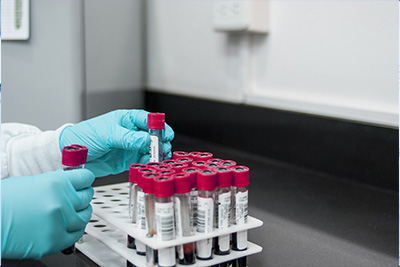-
![Dimethyltin Dichlo···]() 2025-01-08 Dimethyltin Dichloride in Organotin ···
2025-01-08 Dimethyltin Dichloride in Organotin ···Dimethyltin Dichloride (DMTC) plays a significant role in organotin chemistry, serving as a versatile intermediate with widespread applications across various industries. Its utility stems from its ability to undergo substitution reactions efficiently, facilitating the synthesis of numerous organotin compounds. These compounds find extensive use in fields such as polymer stabilization, biocidal agents, and catalysts for organic synthesis. DMTC's benefits include enhanced product performance, prolonged lifespan of materials, and effective pest control. Additionally, its reactivity and ease of handling make it a preferred choice in industrial processes, contributing to economic and environmental advantages.
read more > -
![2-Ethylhexyl Thiog···]() 2025-01-08 2-Ethylhexyl Thioglycolate in Surfac···
2025-01-08 2-Ethylhexyl Thioglycolate in Surfac···2-Ethylhexyl thioglycolate is widely utilized in surface treatments and coatings across various industries due to its unique properties. This compound enhances the performance of coatings by improving their adhesion, flexibility, and resistance to corrosion. It is particularly effective in automotive and marine applications where protection against environmental factors is crucial. Additionally, it finds use in the manufacturing of high-performance paints and varnishes, contributing to longer-lasting and more durable finishes. Its ability to stabilize pigments and prevent settling further underscores its importance in coating formulations. Overall, 2-ethylhexyl thioglycolate plays a pivotal role in industrial applications that demand superior surface protection and aesthetic appeal.
read more > -
![Di-n-butyltin Oxid···]() 2025-01-08 Di-n-butyltin Oxide (DBTO): A Chemic···
2025-01-08 Di-n-butyltin Oxide (DBTO): A Chemic···Di-n-butyltin oxide (DBTO) serves as an effective chemical stabilizer for polyvinyl chloride (PVC), significantly enhancing the plastic manufacturing process. This compound prevents degradation during processing and usage, thereby extending the lifespan of PVC products. DBTO works by scavenging acidic byproducts and forming stable complexes, which inhibit degradation caused by heat and light. Its application in PVC manufacturing improves product quality and durability, making it a valuable additive in various industries such as construction, automotive, and electronics.
read more > -
![Dibutyl Tin Dilaur···]() 2025-01-08 Dibutyl Tin Dilaurate and Its Uses i···
2025-01-08 Dibutyl Tin Dilaurate and Its Uses i···Dibutyl tin dilaurate (DBTDL) is a widely-used organotin compound in chemical engineering, primarily for its catalytic properties. This compound significantly enhances the production of polymers by accelerating the reaction rate and improving the overall quality of the final product. DBTDL is particularly effective in polyurethane manufacturing, where it acts as a catalyst for the reaction between polyols and isocyanates. Additionally, it finds applications in various other fields such as coatings, adhesives, and sealants. The use of DBTDL not only boosts efficiency but also ensures better mechanical and thermal properties of the polymer products. Its versatile catalytic capabilities make it an indispensable tool in modern chemical engineering processes.
read more > -
![Introduction]() 2025-01-08 Introduction
2025-01-08 IntroductionPlease provide the content that you would like me to summarize in English.
read more > -
![Tetra Butyltin in ···]() 2025-01-08 Tetra Butyltin in Organometallic Che···
2025-01-08 Tetra Butyltin in Organometallic Che···Tetra butyltin (TBT) plays a significant role in organometallic chemistry due to its versatile applications. It serves as an essential reagent in various organic synthesis processes, including the formation of tin-organic compounds that are crucial intermediates in pharmaceutical and material science industries. TBT's ability to form stable bonds with carbon makes it invaluable for catalytic reactions and polymerization processes. Additionally, it is extensively used in the production of heat-resistant materials and as a stabilizer in plastics. Despite its utility, concerns over its toxicity have led to stringent regulations on its use, particularly in environmental and biological contexts. This comprehensive review explores the multifaceted uses of TBT, highlighting both its contributions and potential risks in modern chemical applications.
read more > -
![Tri-n-Butyltin Hyd···]() 2025-01-08 Tri-n-Butyltin Hydride: Applications···
2025-01-08 Tri-n-Butyltin Hydride: Applications···Tri-n-butyltin hydride (TBT-H) is widely used in chemical synthesis, particularly in radical reactions for organic synthesis due to its unique reactivity. This substance plays a crucial role in the production of pharmaceuticals, agrochemicals, and polymers. However, TBT-H poses significant safety risks, including toxicity and flammability. Proper handling and storage practices are essential to minimize hazards. Personal protective equipment and ventilation systems should be employed during its use. Understanding these applications and safety measures is vital for chemists working with this compound.
read more > -
![O-Isopropyl Ethylt···]() 2025-01-08 O-Isopropyl Ethylthiocarbamate in Or···
2025-01-08 O-Isopropyl Ethylthiocarbamate in Or···O-Isopropyl ethylthiocarbamate is an important organothiocarbamate compound with significant applications in various fields. This compound is particularly notable for its use as a stabilizer in polyvinyl chloride (PVC) processing, enhancing the material's resistance to heat and light degradation. Additionally, it serves as a crucial component in agricultural formulations, acting as an effective herbicide and pesticide. The synthesis and formulation of O-isopropyl ethylthiocarbamate involve reactions with organotin compounds, which provide stability and enhance its reactivity in different chemical environments. Its unique properties make it indispensable in both industrial and agricultural sectors.
read more > -
![Dimethyltin Dichlo···]() 2025-01-08 Dimethyltin Dichloride: Its Role in ···
2025-01-08 Dimethyltin Dichloride: Its Role in ···Dimethyltin dichloride (DMTC) is a versatile organotin compound extensively used in chemical synthesis and reactions. It serves as an effective catalyst in numerous organic transformations, including esterifications, transesterifications, and polymerizations. DMTC's unique reactivity stems from its ability to form coordination complexes, which can stabilize reactive intermediates and promote selective reactions. Additionally, it acts as a powerful reagent in inorganic synthesis, facilitating the preparation of tin-containing compounds. The compound's efficacy in catalysis and synthetic chemistry underscores its importance in both academic research and industrial applications, highlighting the need for further exploration into its mechanisms and potential uses.
read more >










